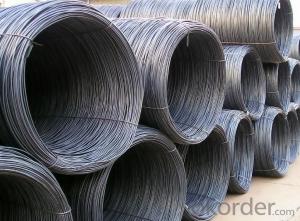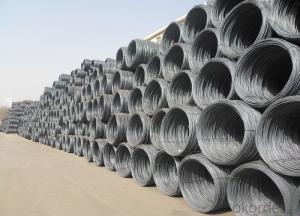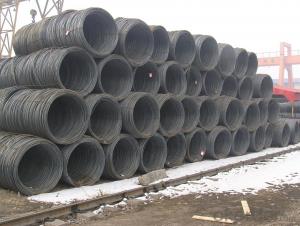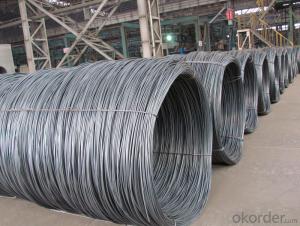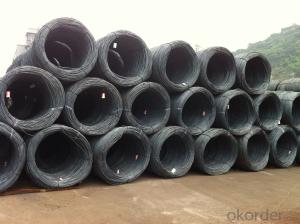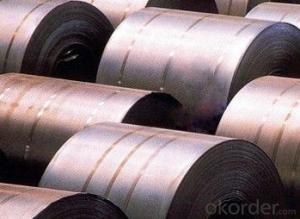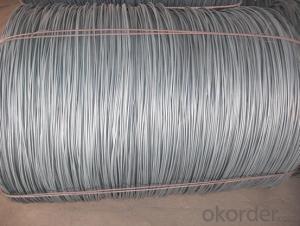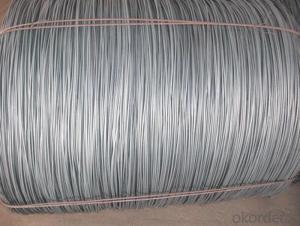Prime Metal Wire Rod in Low Carbon Packed in Coil
- Loading Port:
- China main port
- Payment Terms:
- TT OR LC
- Min Order Qty:
- 100 m.t.
- Supply Capability:
- 10000 m.t./month
OKorder Service Pledge
OKorder Financial Service
You Might Also Like
Item specifice
Product Description:
OKorder is offering Prime Metal Wire Rod in Low Carbon Packed in Coil at great prices with worldwide shipping. Our supplier is a world-class manufacturer of steel, with our products utilized the world over. OKorder annually supplies products to African, South American and Asian markets. We provide quotations within 24 hours of receiving an inquiry and guarantee competitive prices.
Product Applications:
Prime Metal Wire Rod in Low Carbon Packed in Coil are ideal for structural applications and are widely used in construction and manufacturing. Carbon steel wire rod is mainly used for reinforcement of reinforced concrete and welded structure or reprocessed (roberts , nail, etc.) materials, especially used to produce wire drawing, welding electrode, nails, spring, electronic, precise machinery parts and so on.
Product Advantages:
OKorder's Prime Metal Wire Rod in Low Carbon Packed in Coil are durable, strong, and wide variety of sizes.
Main Product Features:
· Premium quality
· Prompt delivery & seaworthy packing (30 days after receiving deposit)
· Can be recycled and reused
· Mill test certification
· Professional Service
· Competitive pricing
Product Specifications:
Manufacture: Hot rolled
Grade:SAE1006,SAE1008B
Certificates: ISO, SGS, BV, CIQ
Packaging: Export packing, nude packing, in coils, each coil around 2mt
Size: 5.5mm, 6.5mm, 8mm, 10mm
Grade | Chemical Composition(%) | |||||
C | Mn | Si | S | P | B | |
SAE1006B | 0.03~O.07 | ≤0.32 | ≤0.30 | ≤0.045 | ≤0.040 | >0.0008 |
Mechanical properties | ||||||
Yield strength(N/mm2) | Tensile strength(N/mm2) | Elongation(%) | ||||
250-280 | 350-380 | ≥32 | ||||
Grade | Chemical Composition(%) | |||||
C | Mn | Si | S | P | B | |
SAE1008B | 0.10max | 0.3~O.50 | 0.15max | 0.050max | 0.040 max | 0.0008 min |
Mechanical properties | ||||||
Yield strength(N/mm2) | Tensile strength(N/mm2) | Elongation(%) | ||||
FAQ:
Q1: Why buy Materials & Equipment from OKorder.com?
A1: All products offered byOKorder.com are carefully selected from China's most reliable manufacturing enterprises. Through its ISO certifications, OKorder.com adheres to the highest standards and a commitment to supply chain safety and customer satisfaction.
Q2: How do we guarantee the quality of our products?
A2: We have established an advanced quality management system which conducts strict quality tests at every step, from raw materials to the final product. At the same time, we provide extensive follow-up service assurances as required.
Q3: How soon can we receive the product after purchase?
A3: Within three days of placing an order, we will arrange production. The normal sizes with the normal grade can be produced within one month. The specific shipping date is dependent upon international and government factors, the delivery to international main port about 45-60days.
Images:
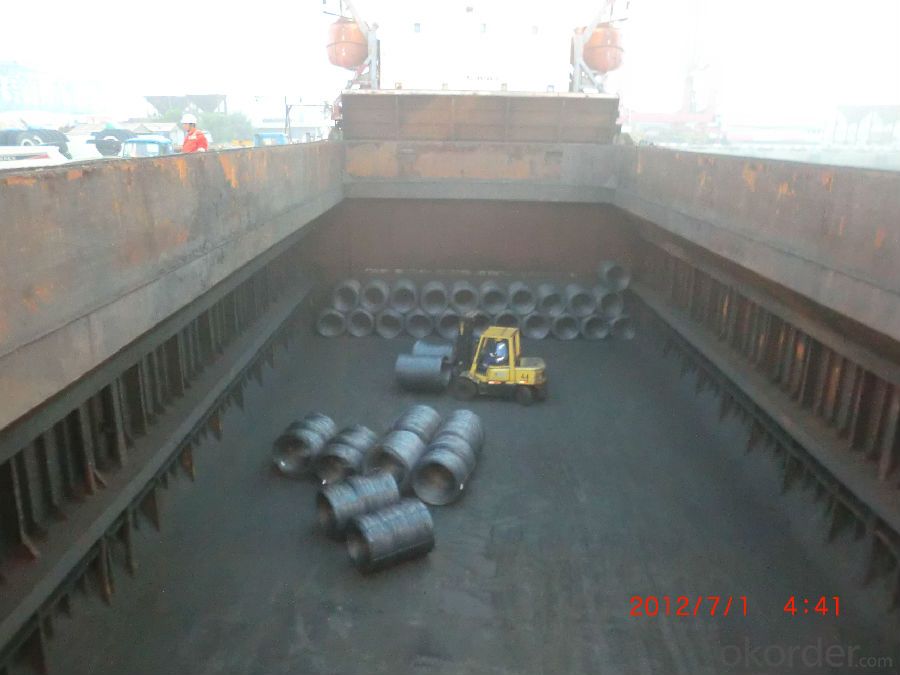
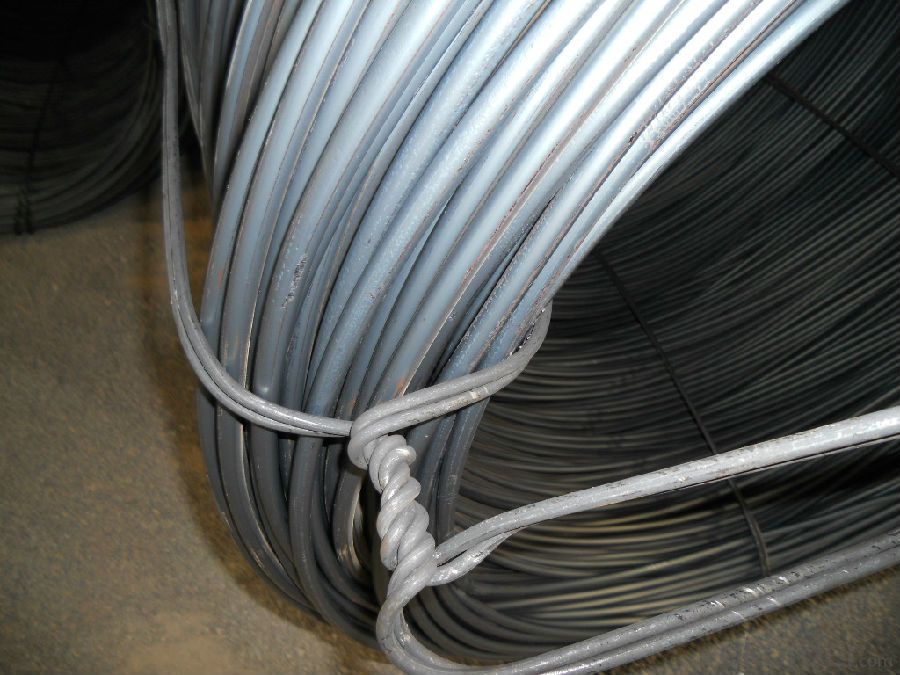
- Q:What are the different surface cleaning agents used for steel wire rod?
- There are several different surface cleaning agents that can be used for steel wire rod. Some common ones include pickling agents, acidic cleaners, alkaline cleaners, and degreasers. These agents are used to remove any dirt, grease, rust, or other contaminants from the surface of the steel wire rod, ensuring a clean and smooth surface for further processing or application.
- Q:What are the common material specifications for steel wire rod?
- The common material specifications for steel wire rod are typically determined by the specific requirements of the industry or application in which the wire rod will be used. However, there are some general material specifications that are commonly found in steel wire rod. One of the most important material specifications for steel wire rod is its chemical composition. Steel wire rod is typically made from carbon steel, which contains varying amounts of carbon and other alloying elements such as manganese, silicon, and sulfur. The exact composition of the steel wire rod will depend on the desired mechanical properties and the intended application. Another important material specification for steel wire rod is its size and shape. Steel wire rod is generally produced in coils with diameters ranging from a few millimeters to several centimeters. The specific size and shape of the wire rod will depend on the requirements of the end product, such as the desired strength, flexibility, and conductivity. Furthermore, the mechanical properties of the steel wire rod are also specified. These properties include the tensile strength, yield strength, and elongation, which determine the wire rod's ability to withstand forces and deformations without breaking. The mechanical properties are typically achieved through specific manufacturing processes and heat treatments. Other common material specifications for steel wire rod may include surface quality requirements, such as smoothness, cleanliness, and absence of defects. Additionally, certain industries or applications may have specific requirements for corrosion resistance, electrical conductivity, or thermal conductivity, which would also be specified. It is important to note that the exact material specifications for steel wire rod can vary significantly depending on the specific industry or application. Therefore, it is crucial to carefully review the requirements and consult industry standards or experts to ensure the appropriate material specifications are met for the intended use of the steel wire rod.
- Q:What are the different types of wire mesh for sieving made from steel wire rod?
- There are several different types of wire mesh for sieving that are made from steel wire rod. These types include: 1. Plain weave wire mesh: This is the most common type of wire mesh used for sieving. It is made by weaving the steel wire rods together in an over-and-under pattern, creating a square or rectangular mesh structure. Plain weave wire mesh is known for its simplicity and versatility. 2. Twill weave wire mesh: Twill weave wire mesh is similar to plain weave, but the wires are interlaced in a diagonal pattern, creating a tighter mesh structure. This type of wire mesh is often used for fine sieving applications where a higher level of precision is required. 3. Dutch weave wire mesh: Dutch weave wire mesh is made by weaving the wires in an over-and-under pattern, but with different wire diameters for the warp and weft wires. This creates a mesh with smaller openings in one direction, making it ideal for applications where fine particles need to be separated. 4. Welded wire mesh: Welded wire mesh is made by welding the intersecting points of the steel wires together, creating a strong and durable mesh structure. This type of wire mesh is commonly used for heavy-duty sieving applications, such as in construction or industrial settings. 5. Expanded metal mesh: Expanded metal mesh is made by cutting and stretching a flat sheet of steel, creating a mesh with diamond-shaped openings. This type of wire mesh is known for its strength and rigidity, making it suitable for sieving applications that require high impact resistance. Overall, the different types of wire mesh for sieving made from steel wire rod offer a range of options to suit various sieving needs, from basic to more specialized applications. The choice of wire mesh will depend on factors such as the size of the particles being sieved, the desired level of precision, and the intended use of the sieved material.
- Q:What is the difference between hot rolled and cold drawn steel wire rod?
- Hot rolled steel wire rod is produced by passing a heated billet through a series of rolling mills, resulting in a larger diameter and a rougher surface finish. On the other hand, cold drawn steel wire rod is formed by pulling a hot rolled wire rod through a die at room temperature, resulting in a smaller diameter and a smoother surface finish.
- Q:How is the mechanical strength of steel wire rod assessed?
- The mechanical strength of steel wire rod can be evaluated using a range of testing methods. One widely used approach involves subjecting a sample of the wire rod to tension until it breaks, known as tensile testing. This test measures the maximum force the wire rod can withstand before failing, also referred to as ultimate tensile strength. Another crucial parameter to consider is yield strength, which indicates the maximum stress the wire rod can tolerate without suffering permanent deformation. Other tests, such as hardness testing, assess the wire rod's surface resistance to scratching or indentation. Popular methods for hardness testing include the Rockwell and Brinell tests. Ductility is another important factor to consider, which measures the wire rod's ability to deform under tensile stress without fracturing. Typically, elongation and reduction of area measurements are used to evaluate ductility. Furthermore, the wire rod's toughness, reflecting its capability to absorb energy prior to fracturing, can be assessed through impact testing. This involves striking the wire rod with a pendulum or falling weight to measure the energy absorbed during fracture. By employing these various testing methods, the mechanical strength of steel wire rod can be thoroughly evaluated, ensuring its suitability for a wide range of applications in industries such as construction, automotive, and manufacturing.
- Q:What are the common documentation requirements for steel wire rod?
- The common documentation requirements for steel wire rod typically include the product specifications, test certificates, mill certificates, packing lists, and shipping documents such as bills of lading or airway bills. These documents provide crucial information about the quality, origin, and shipment of the steel wire rod, ensuring transparency and compliance with industry standards.
- Q:How is steel wire rod used in the manufacturing of wire forms for electrical connectors?
- The production of wire forms for electrical connectors heavily relies on steel wire rod. This wire rod serves as the primary material that is converted into different wire forms, including pins, sockets, and terminals, which are vital elements of electrical connectors. To start the manufacturing process, high-quality steel wire rod is carefully chosen. Typically, carbon steel or stainless steel is used for this purpose. The selection of the wire rod is based on specific properties such as strength, flexibility, and conductivity, ensuring that the resulting wire forms meet the required standards and specifications. Once the appropriate wire rod is selected, it undergoes a series of manufacturing operations. Initially, the wire rod is drawn through a series of dies to reduce its diameter and achieve the desired size. This process, known as wire drawing, is necessary to attain the required thickness and smoothness of the wire form. After wire drawing, the wire rod is straightened and cut into specific lengths. The determination of these lengths is based on the design and dimensions of the wire forms needed for the electrical connectors. This straightening and cutting process ensures uniformity and consistency in size. Subsequently, the wire rod is bent and shaped into the desired form. Specialized machines and tools are used for this purpose, enabling the wire rod to be bent into various configurations such as loops, hooks, or specific geometrical shapes. These wire forms are designed to fit and connect with other components of the electrical connectors. Once the wire forms are shaped, they undergo additional processes such as heat treatment or plating. These treatments enhance the mechanical properties of the wire forms and improve their resistance to corrosion. As a result, the wire forms can withstand demanding conditions and provide reliable connectivity in electrical applications. In conclusion, the role of steel wire rod in the manufacturing of wire forms for electrical connectors is critical. Through a series of manufacturing processes, the wire rod is transformed into various wire forms that are essential components of electrical connectors. These wire forms ensure reliable connectivity and proper functioning of electrical systems.
- Q:How does the elongation of steel wire rod vary with different wire drawing processes?
- The elongation of a steel wire rod can vary depending on the specific wire drawing process employed. Wire drawing is a metalworking process that involves pulling a metal wire rod through a series of dies to reduce its diameter and increase its length. Different wire drawing processes, such as cold drawing or hot drawing, can impact the elongation of the steel wire rod. Cold drawing involves pulling the wire rod through a die at room temperature, while hot drawing involves heating the wire rod and then pulling it through the die. In general, the elongation of a steel wire rod tends to be greater in hot drawing compared to cold drawing. This is because the heat softens the steel, making it more ductile and easier to deform. As a result, the wire rod can undergo greater elongation without breaking or fracturing. In cold drawing, the steel wire rod undergoes less elongation due to its lower ductility at room temperature. The cold drawing process may require multiple passes through different dies to achieve the desired reduction in diameter and increase in length. However, the overall elongation may be relatively lower compared to hot drawing. Additionally, factors such as the reduction ratio, die design, lubrication, and speed of the wire drawing process can also influence the elongation of the steel wire rod. Higher reduction ratios (the difference in diameter before and after each pass) generally result in greater elongation. Proper die design and lubrication can minimize friction and improve the wire's ability to elongate. The speed of the wire drawing process can also affect elongation, as excessive speed can cause tension and decrease elongation. Overall, the elongation of a steel wire rod varies with different wire drawing processes. Hot drawing typically allows for greater elongation due to the increased ductility of the steel at higher temperatures, while cold drawing may result in relatively lower elongation. The specific process parameters and conditions, such as reduction ratio, die design, lubrication, and speed, also play a significant role in determining the elongation of the wire rod.
- Q:What are the different types of steel wire rod surface treatment processes?
- There are several different types of steel wire rod surface treatment processes, including pickling, galvanizing, phosphating, electroplating, and powder coating.
- Q:What are the main factors influencing the choice of steel wire rod technical support?
- The choice of technical support for steel wire rod production can be influenced by various factors depending on the specific needs and requirements of the industry or company. However, there are several common factors that play a significant role in the decision-making process. One key factor is the expertise and knowledge of the support provider. It is important for the chosen technical support team to have a deep understanding of steel wire rod production processes, equipment, and technologies. They should possess the necessary experience and expertise to offer guidance and solutions for any technical challenges that may arise during production. Another important factor is the reliability and responsiveness of the technical support team. Given that steel wire rod production processes can be time-sensitive, any technical issues or breakdowns can result in costly production delays. Therefore, having a responsive technical support team that can quickly address and resolve any issues is crucial to ensure a smooth and uninterrupted production. The availability of comprehensive technical support services is also a significant factor to consider. This includes not only troubleshooting and resolving technical issues, but also providing guidance and assistance in areas such as process optimization, equipment maintenance, and quality control. A comprehensive technical support provider can take a holistic approach to enhancing the overall efficiency and productivity of the steel wire rod production process. Cost is another important consideration. Companies need to evaluate the cost-effectiveness of the technical support services offered. This involves considering factors such as the upfront cost of the support, ongoing maintenance expenses, as well as the potential cost savings or productivity improvements that can be achieved through the use of the support services. Furthermore, the reputation and track record of the technical support provider are crucial factors to consider. It is essential to choose a provider with a proven track record of delivering high-quality technical support services to ensure reliability and effectiveness. Lastly, the compatibility and integration of the technical support services with the existing infrastructure and systems should be evaluated. The chosen support provider should be capable of seamlessly integrating their services into the existing production processes and systems, minimizing disruptions and maximizing efficiency. In conclusion, the choice of steel wire rod technical support is influenced by factors such as technical expertise, reliability and responsiveness, comprehensive services, cost-effectiveness, reputation, and compatibility. Considering these factors will enable companies to make an informed decision that meets their specific needs and requirements.
1. Manufacturer Overview |
|
|---|---|
| Location | |
| Year Established | |
| Annual Output Value | |
| Main Markets | |
| Company Certifications | |
2. Manufacturer Certificates |
|
|---|---|
| a) Certification Name | |
| Range | |
| Reference | |
| Validity Period | |
3. Manufacturer Capability |
|
|---|---|
| a)Trade Capacity | |
| Nearest Port | |
| Export Percentage | |
| No.of Employees in Trade Department | |
| Language Spoken: | |
| b)Factory Information | |
| Factory Size: | |
| No. of Production Lines | |
| Contract Manufacturing | |
| Product Price Range | |
Send your message to us
Prime Metal Wire Rod in Low Carbon Packed in Coil
- Loading Port:
- China main port
- Payment Terms:
- TT OR LC
- Min Order Qty:
- 100 m.t.
- Supply Capability:
- 10000 m.t./month
OKorder Service Pledge
OKorder Financial Service
Similar products
New products
Hot products
Hot Searches
Related keywords
